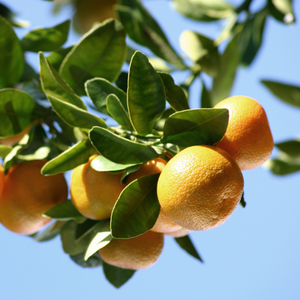By Amanda Pike

A beautiful landscape plays an essential role in the quality of an environment, as it affects economic well-being and physical and psychological health. For this reason, the design of good landscape can lead to the highest and best return on property value. Increasingly in Florida, home owners are turning to the concept of a "food forest" for their landscape design. This means edible perennials are planted in the form of fruit and nut trees, edible leaf shrubs, groundcover, vines, and more.
The benefits of a well-designed food forest landscape are notable. In addition to supplementing nutrition, food forests provide shade, reduce air and noise pollution, and can be breathtakingly beautiful by featuring edible flowers, colorful fruits, butterfly host plants, and ornamental crops. Rich with native plants, these landscapes can easily be designed as a cost-effective, awe-inspiring, and peaceful oasis for humans and wildlife alike. Food forests are increasingly in demand as a means to promote health and economic value because they function like a self-sustaining natural forest, providing for both humans and other species, and underpinning sustainability and biodiversity goals.
Florida, with its mild winters, provides a nearly ideal backdrop for growing a food forest. Feeding an increasing population and ensuring the economic and social well-being of the community will be a growing challenge. As an example, the COVID-19 pandemic and associated lockdowns aggravated food insecurity given disruptions in the food supply chain and resulted in even greater disparities in access to nutrition. There is now an obvious and acknowledged need to adopt more resilient food systems, reduce food waste, and strengthen local food production. Food forests are a viable option for meeting these goals. Additionally, there is an economic potential as food foresters are able to sell excess crops, seeds, cuttings, and propagated plants to earn a supplemental income.
Compared to national averages, Florida has higher rates of food insecurity and a corresponding prevalence of chronic diseases. Solutions such as low-cost food forest landscape designs can both beautify and nourish. Nearly one-third of children in Florida are food insecure. Right now, school leaders and home owners alike have the essential resource needed to foster a food forest: lawns. Many are already investing in gardens; however, current efforts are often based on annual crops in raised beds requiring extensive maintenance and inputs while adding little to the ecosystem over the long run. As one Harvard scholar pointed out, if even a third of schools in a single state converted a quarter-acre lawn to a food forest, it would result in hundreds of millions of pounds of fresh, healthy food for children while saving over 4 million dollars in pollution management costs over 30 years. A food forest within a school setting not only provides
food and decreases costs, it also correlates with learning objectives and critical curriculum.
Food foresters in Florida are poised to be societal leaders amidst changing and uncertain environments and climate. Many of those growing food forests explain that healthy soil is a legacy for future generations and creating a food forest is a natural way to improve soil health and human health simultaneously.